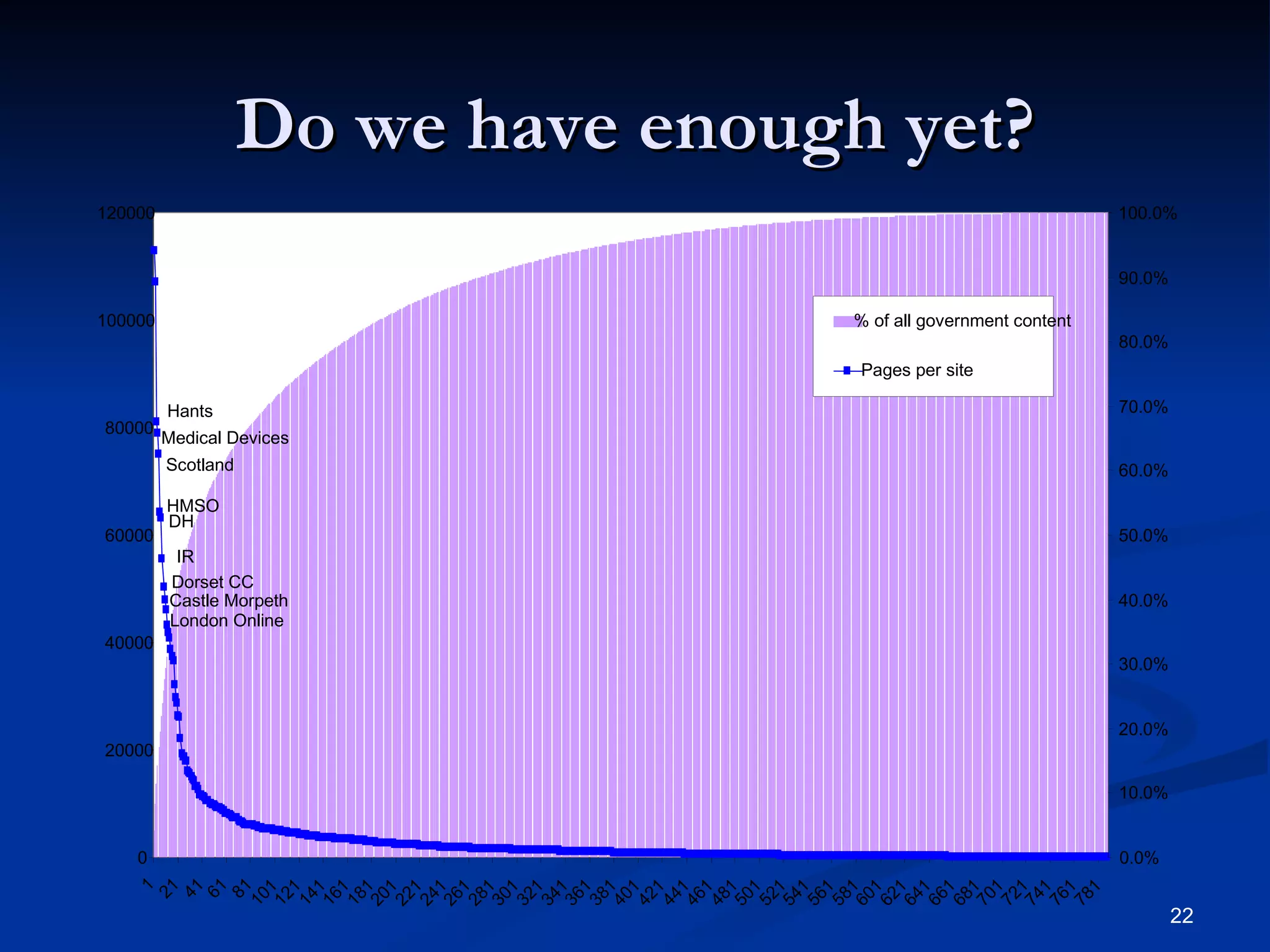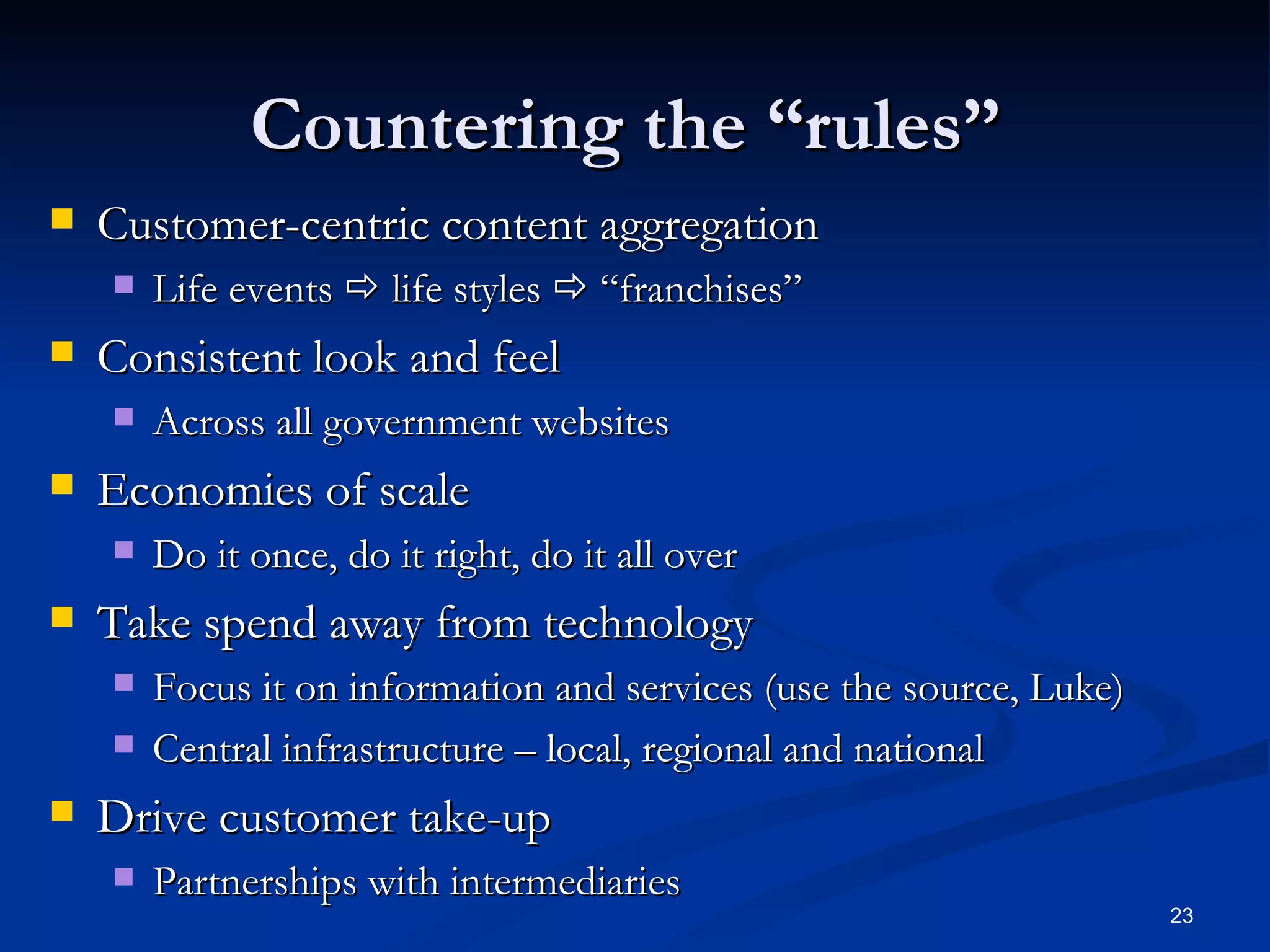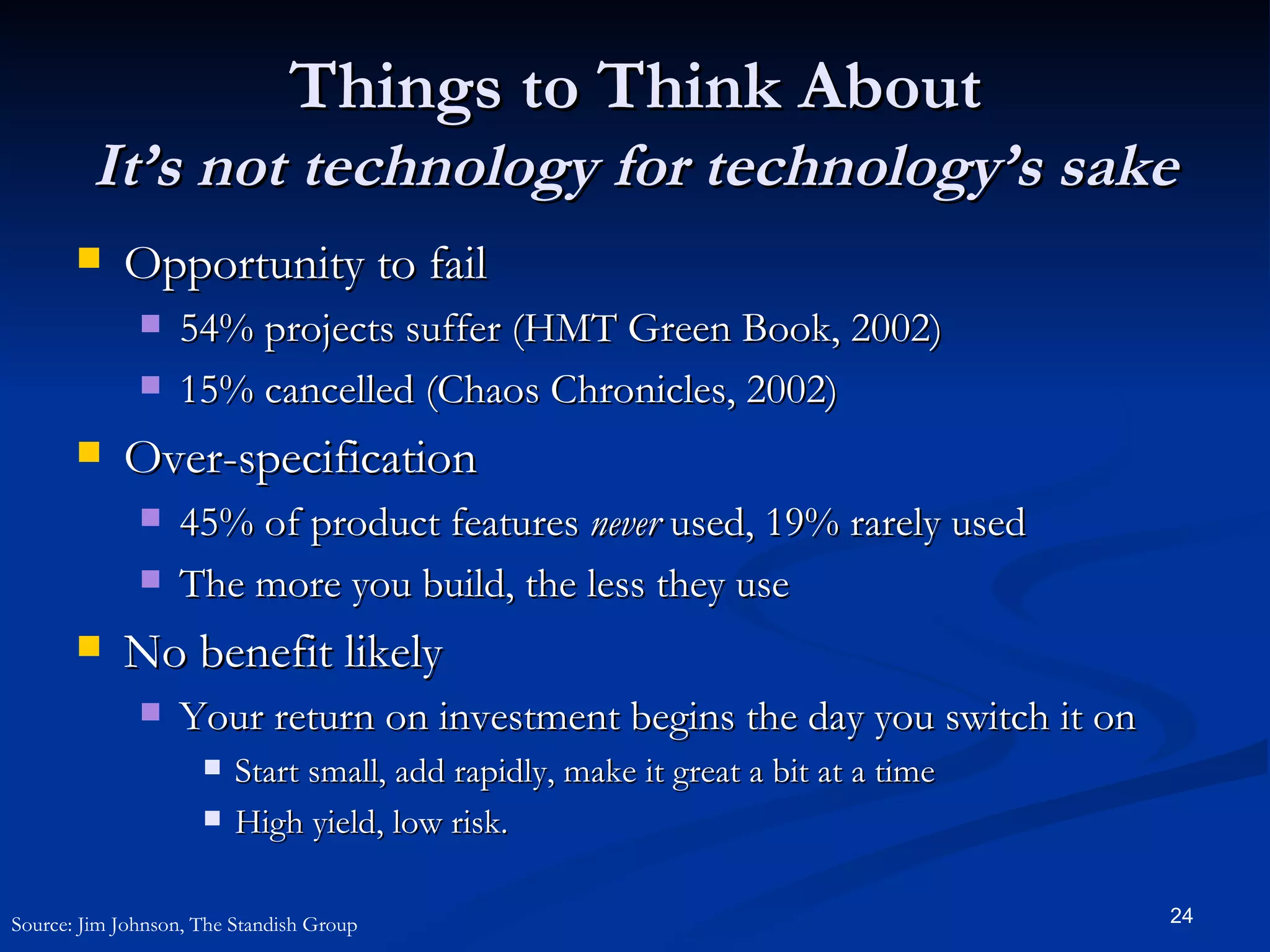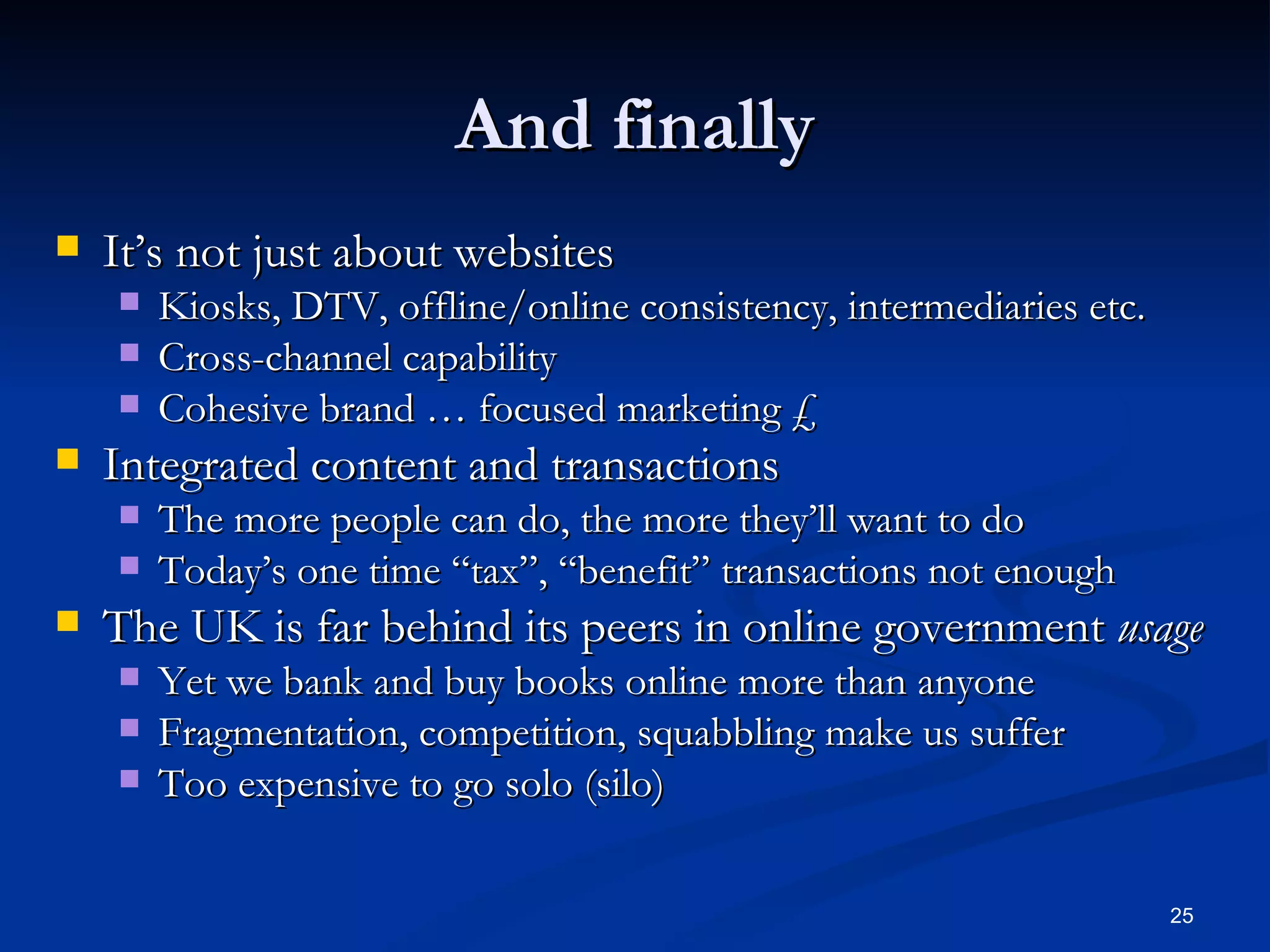The document discusses authentication for online government services in the UK. It notes that while internet usage in the UK grew significantly between 1995 and 2003, online usage of government services remained low at around 11%. The document examines different methods of authentication used by the private and public sectors and issues with the current predominant username and password system. It explores options for the future such as entitlement cards, biometrics, and developing a network of cross-trust between organizations to improve online identity verification.

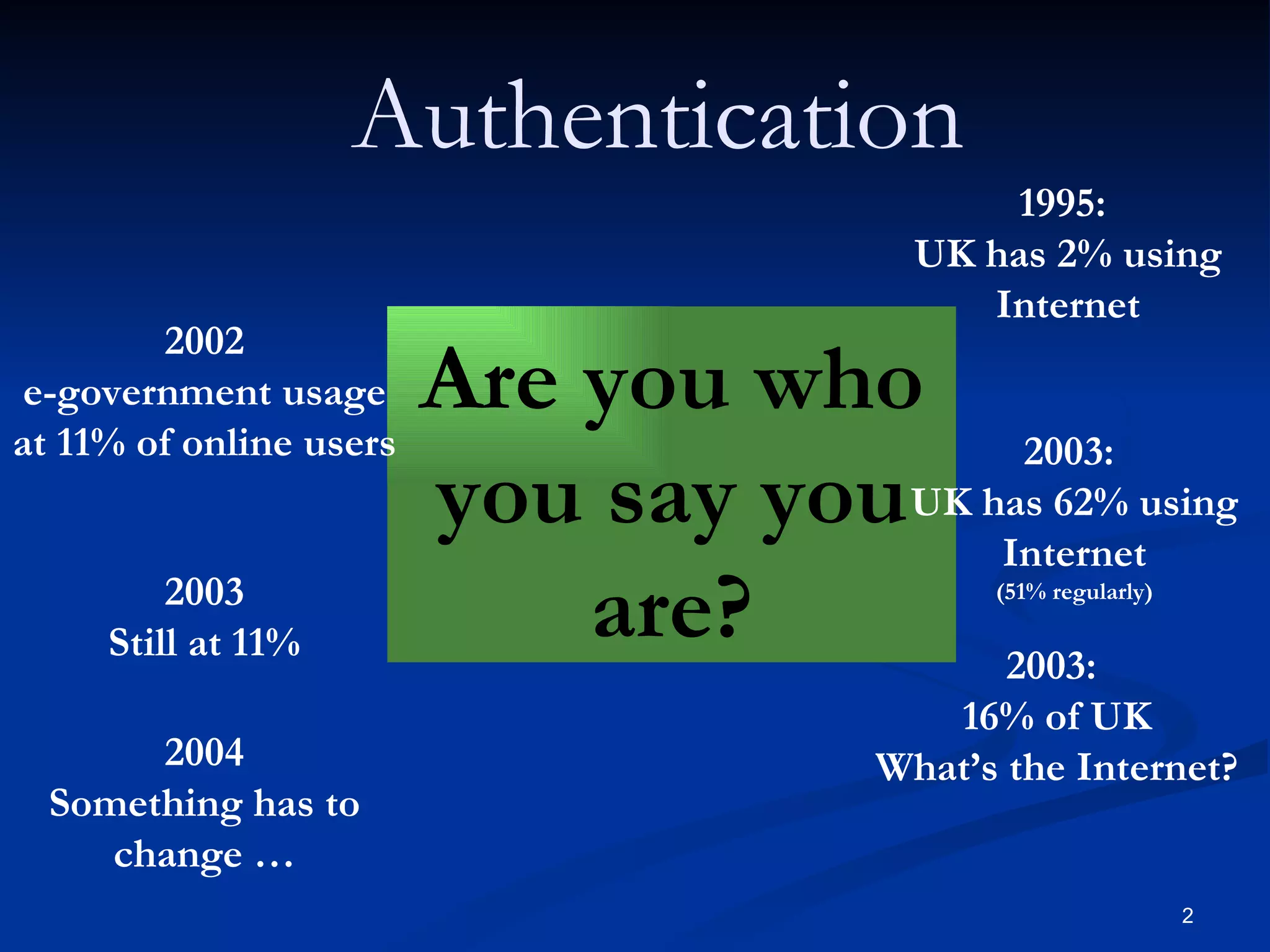
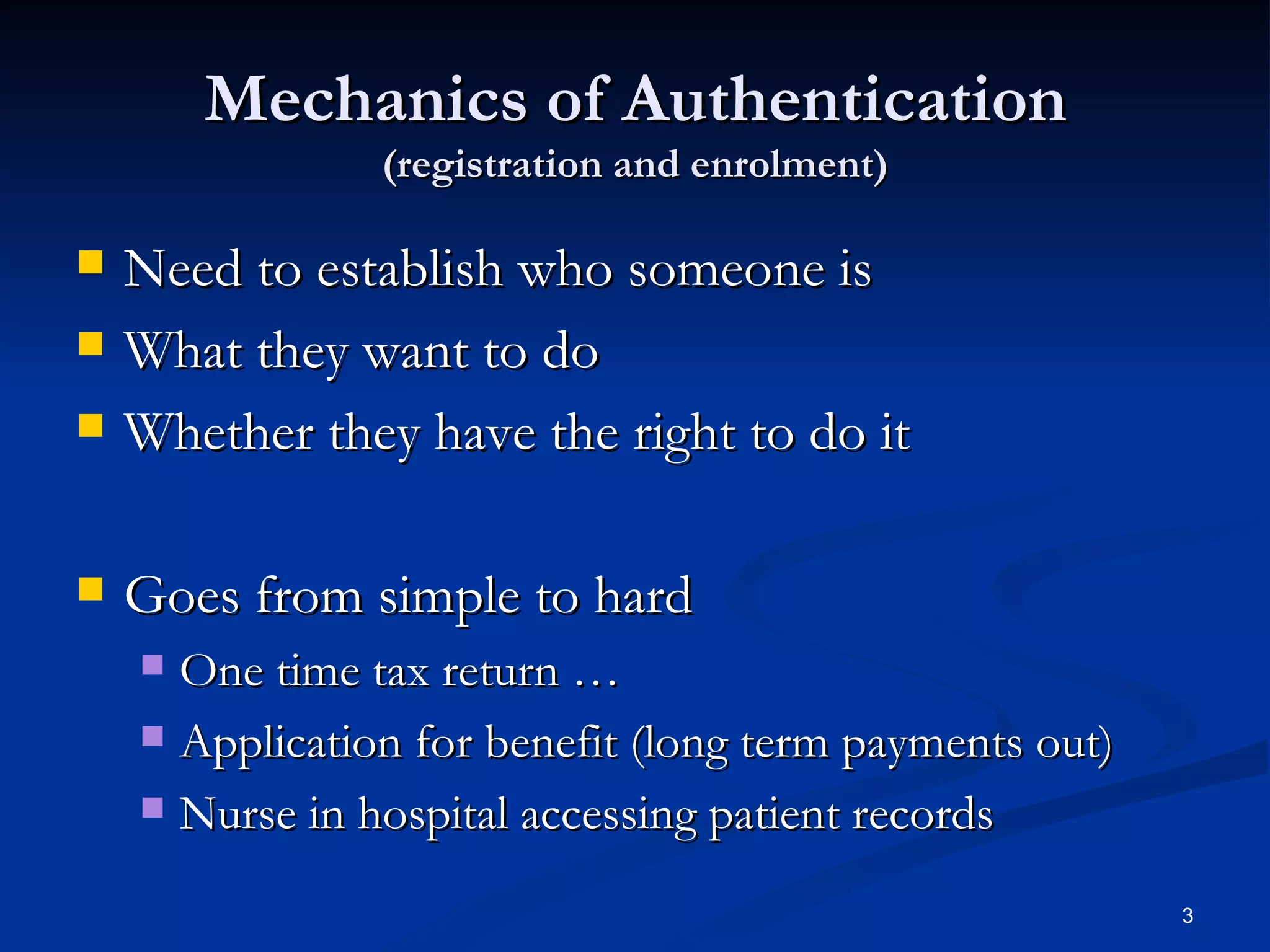
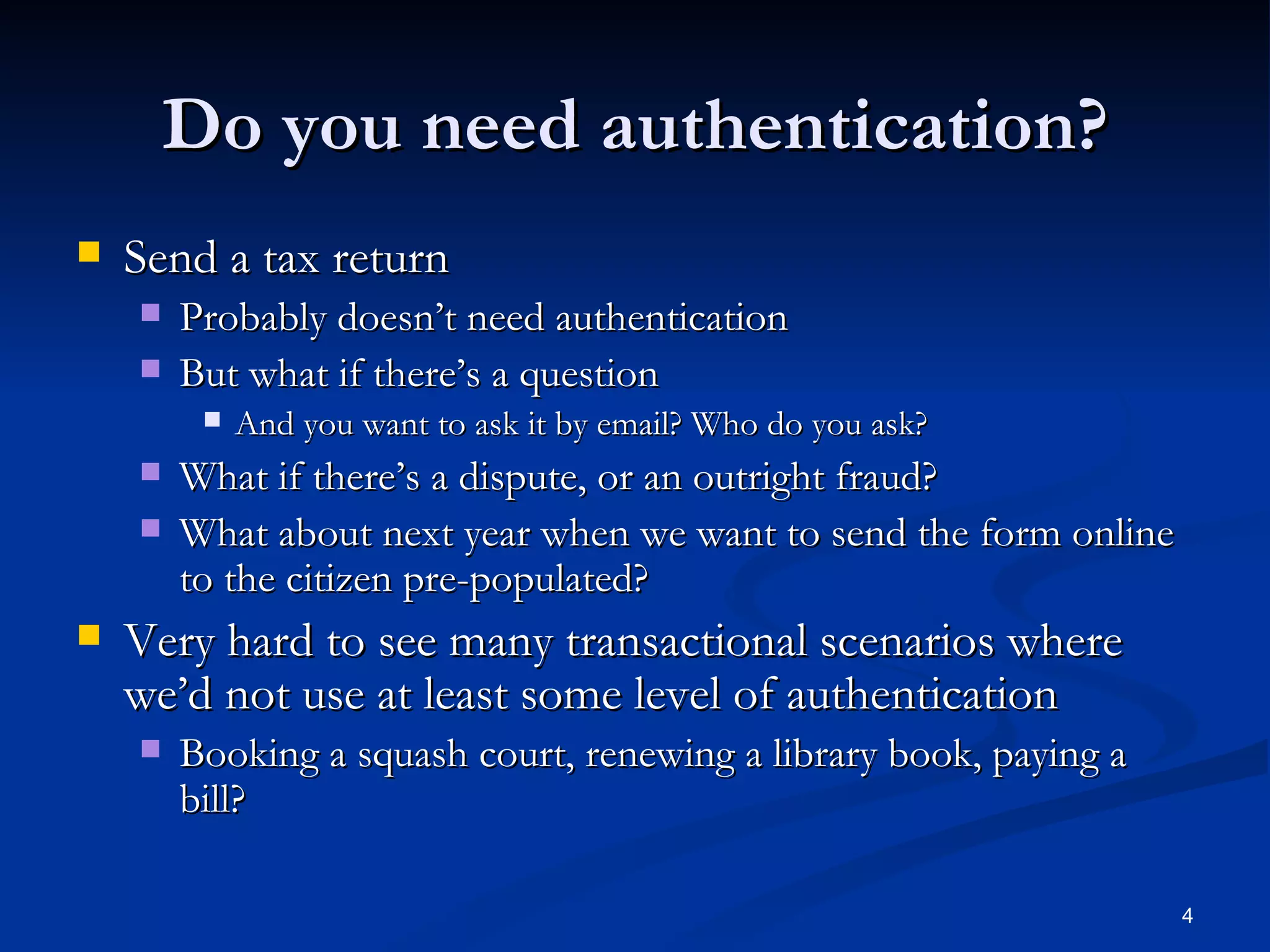
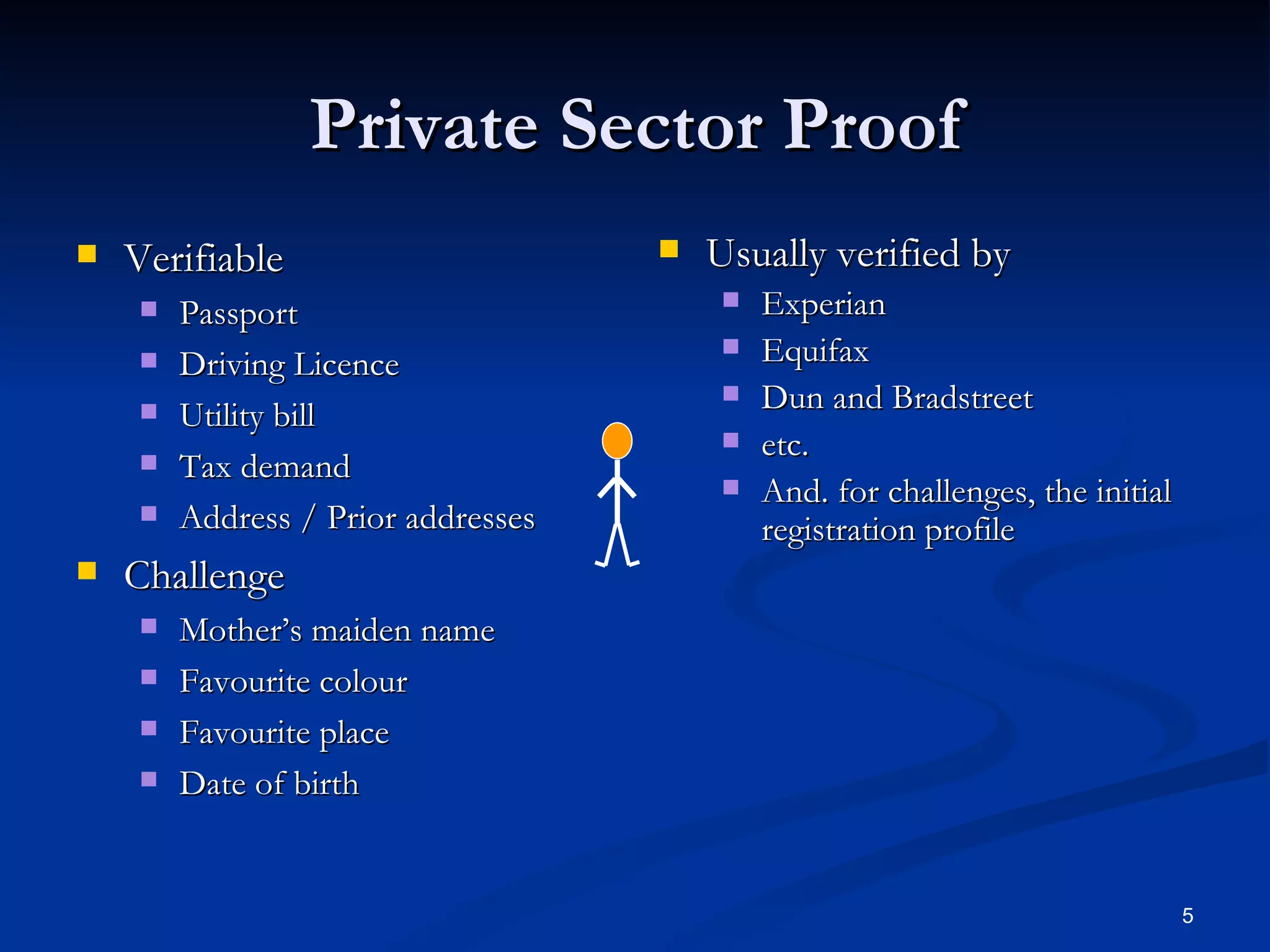
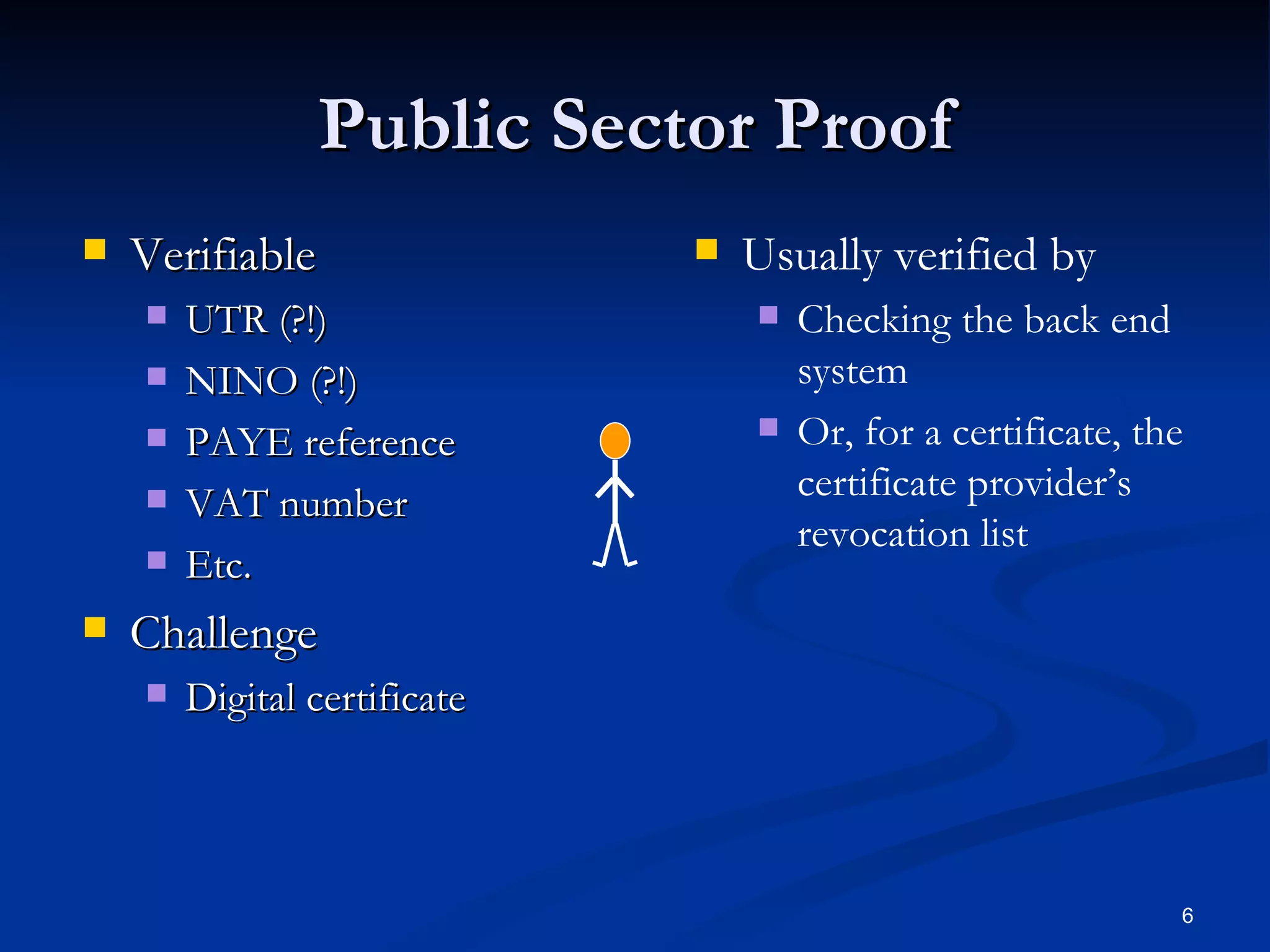
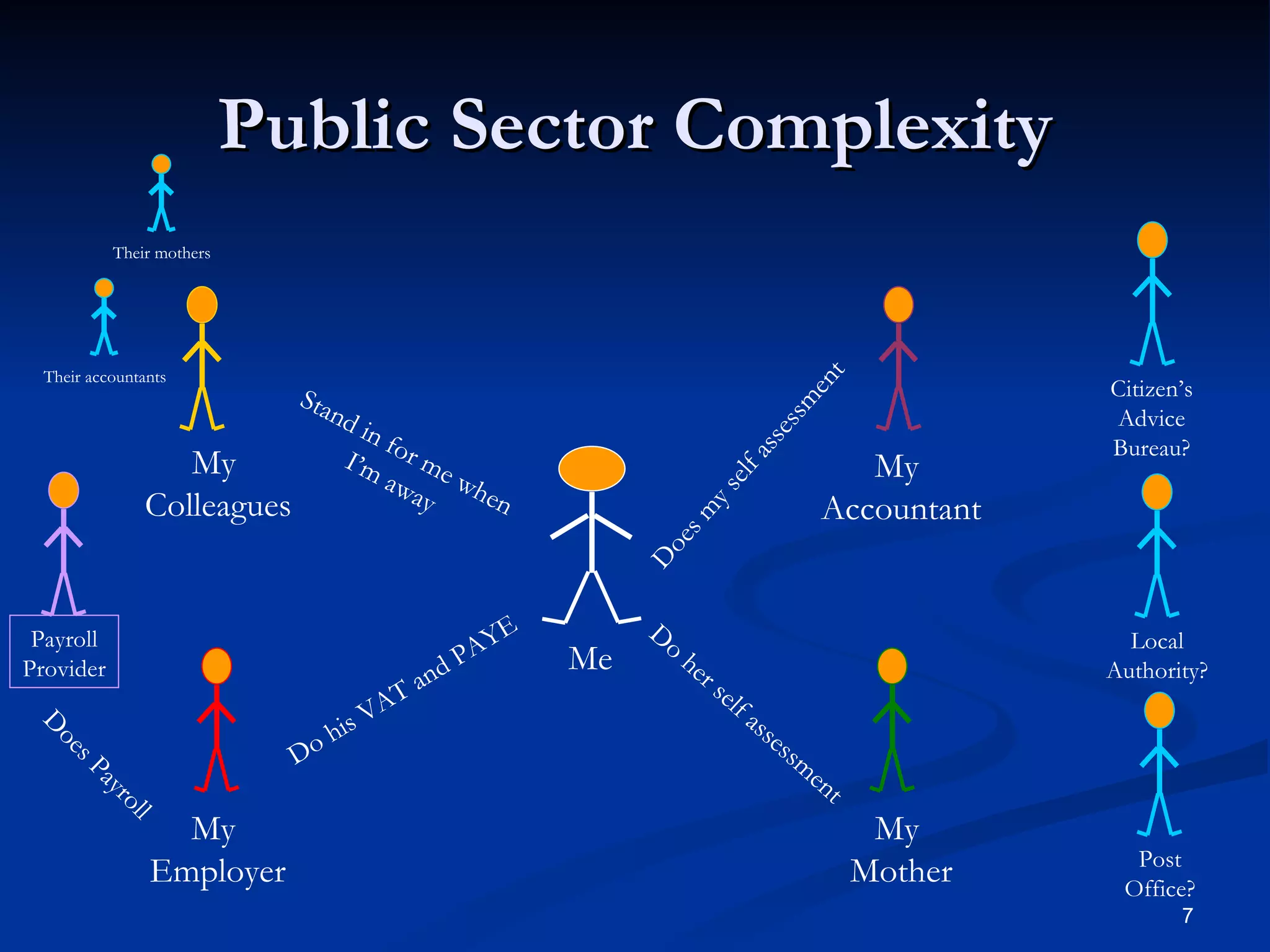
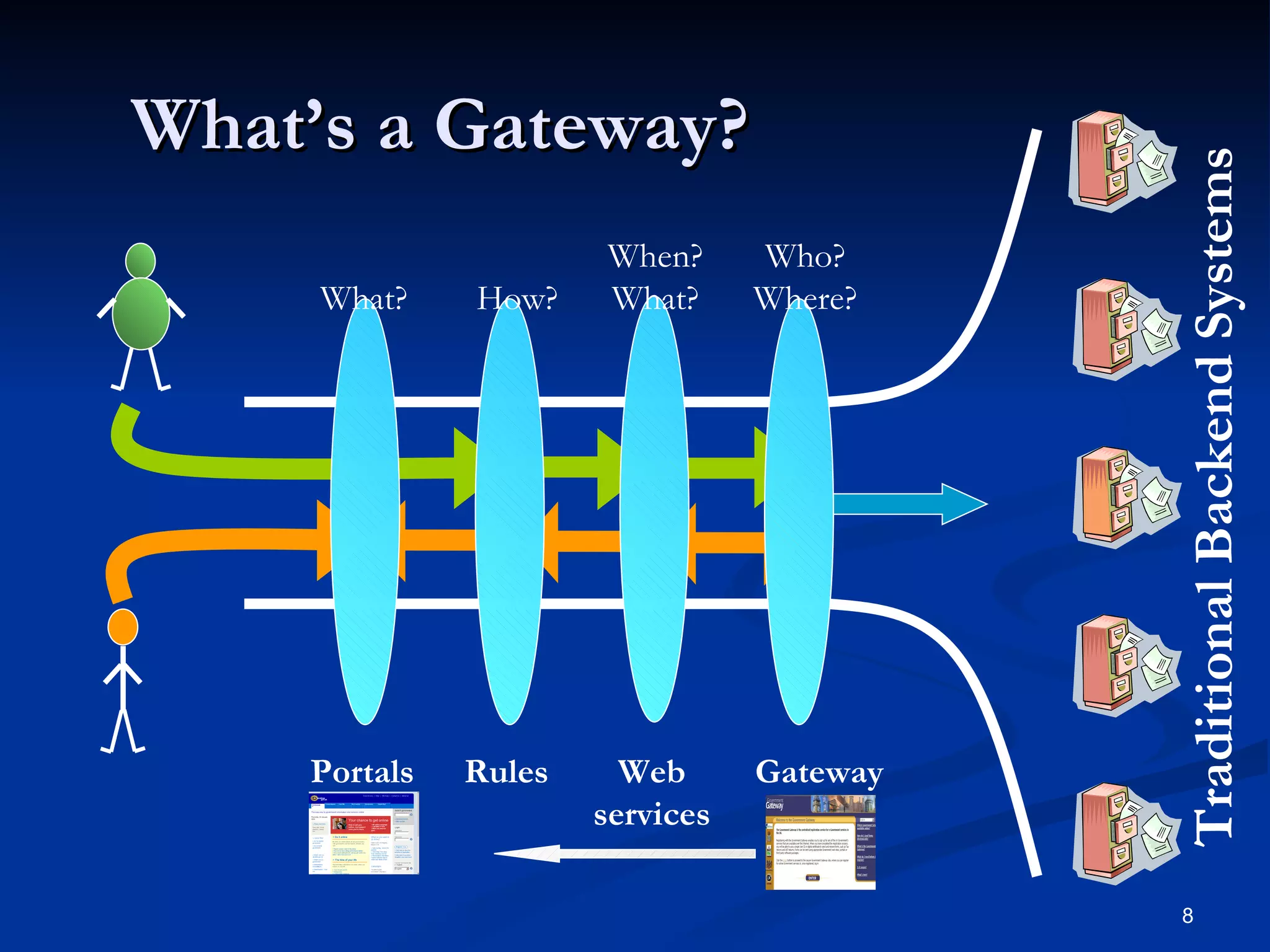
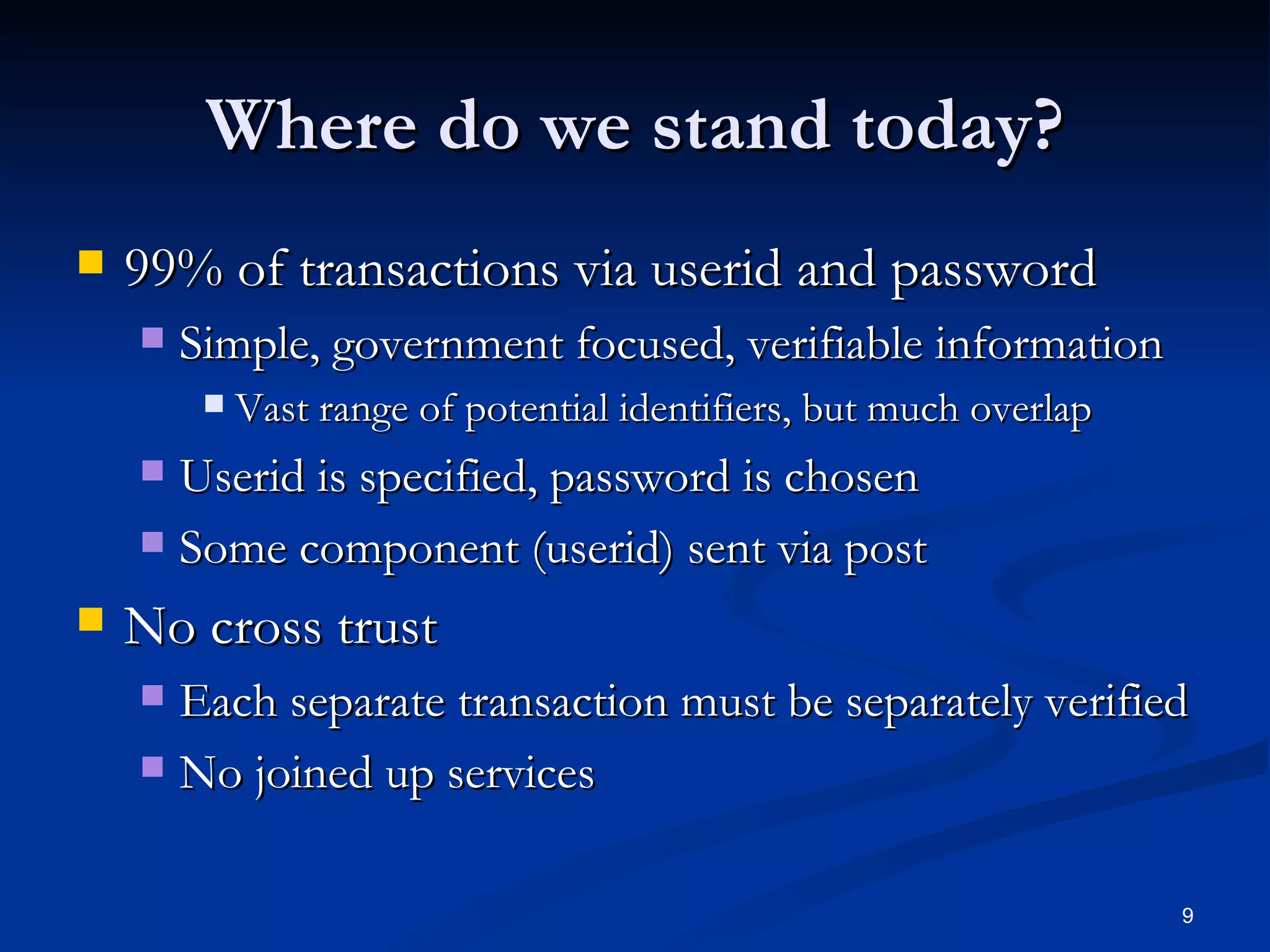
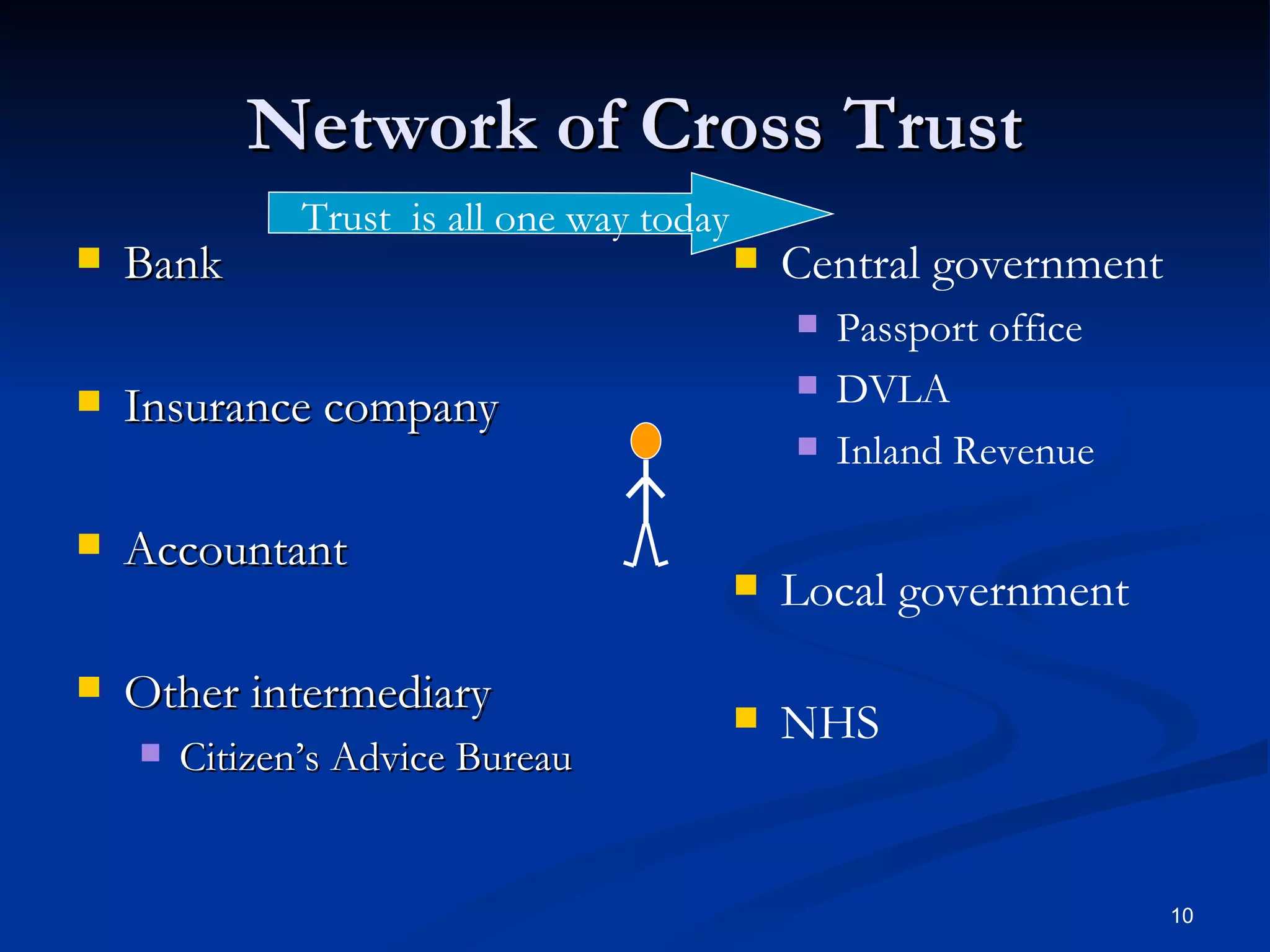
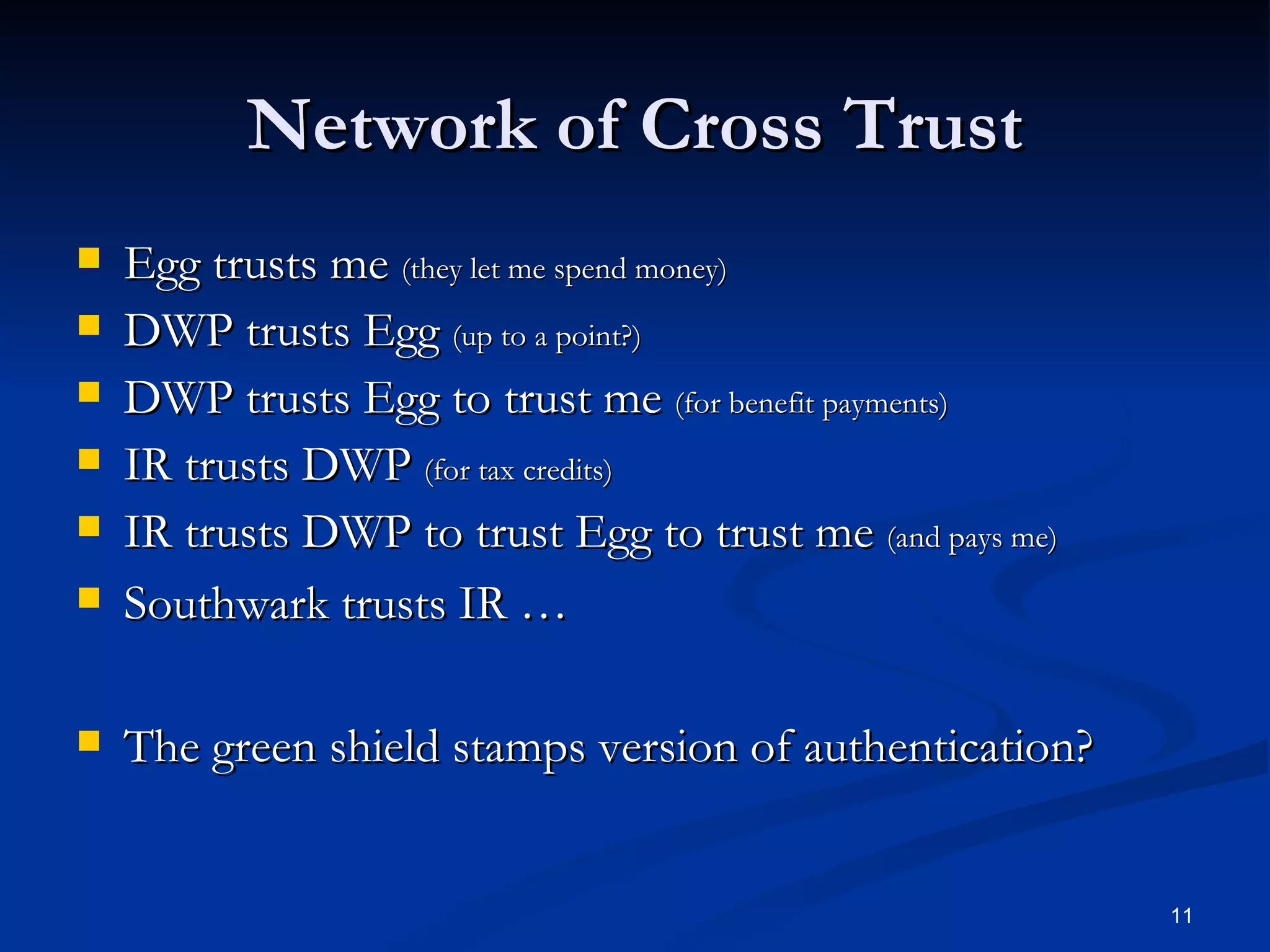
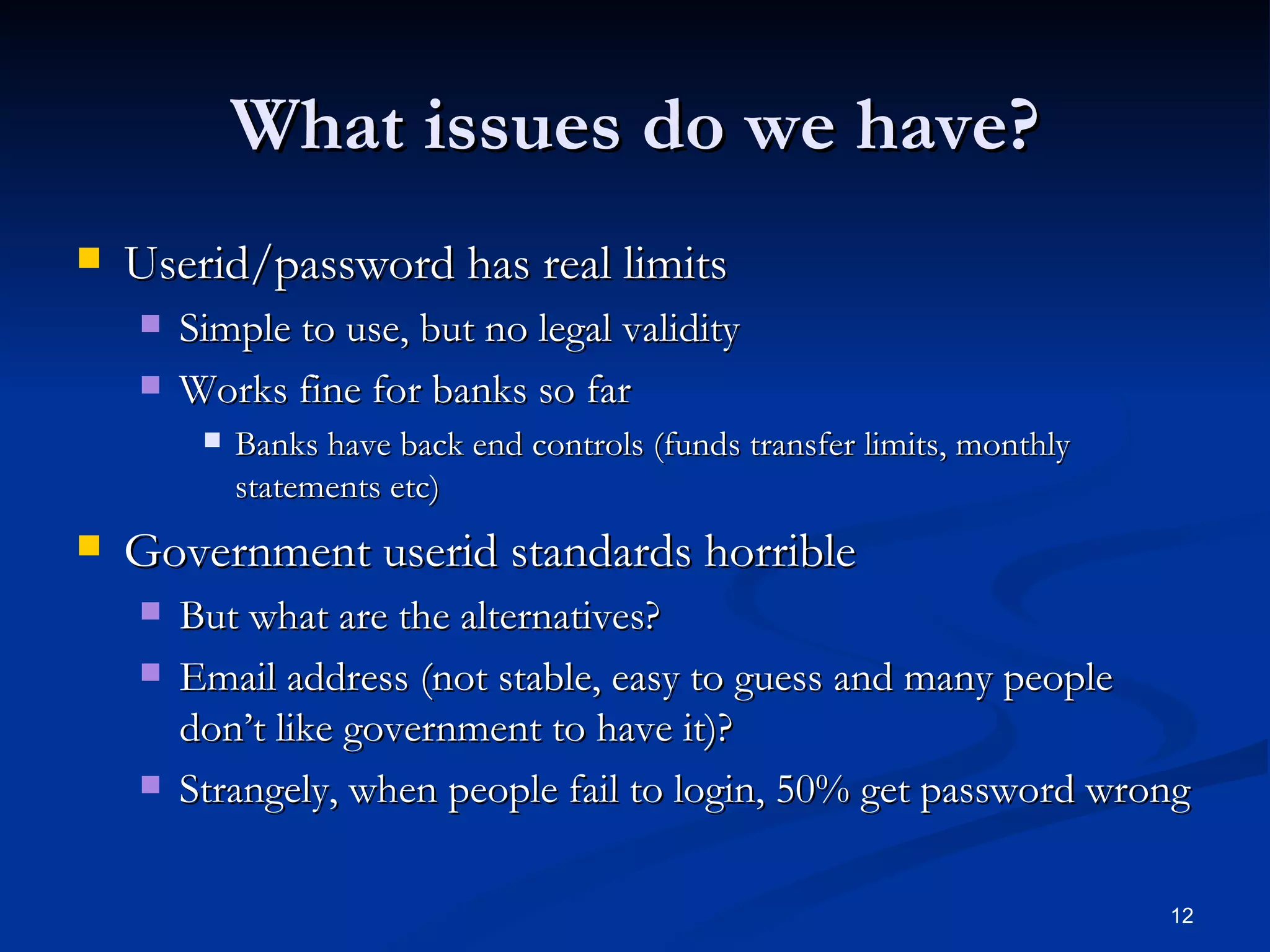

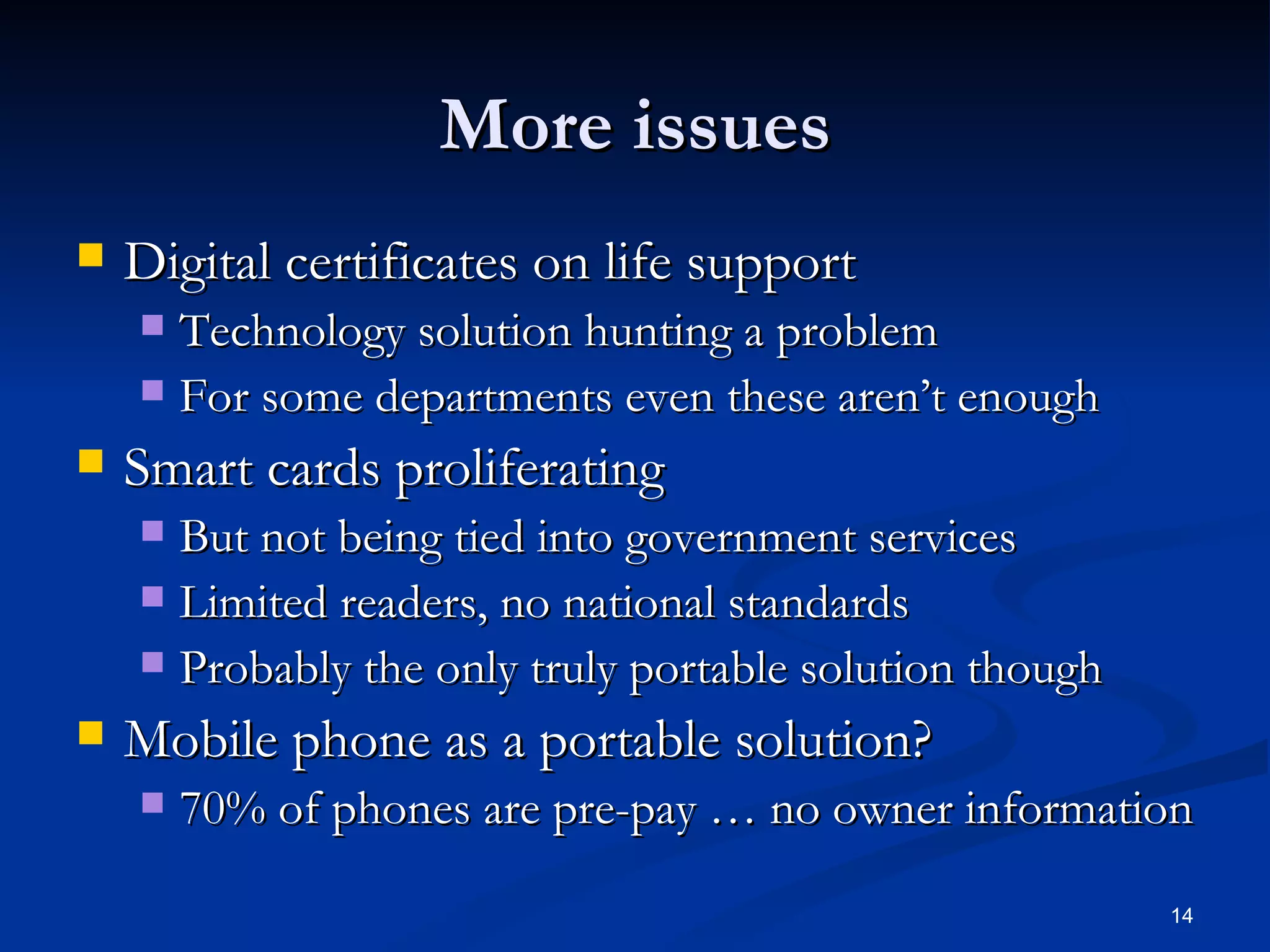



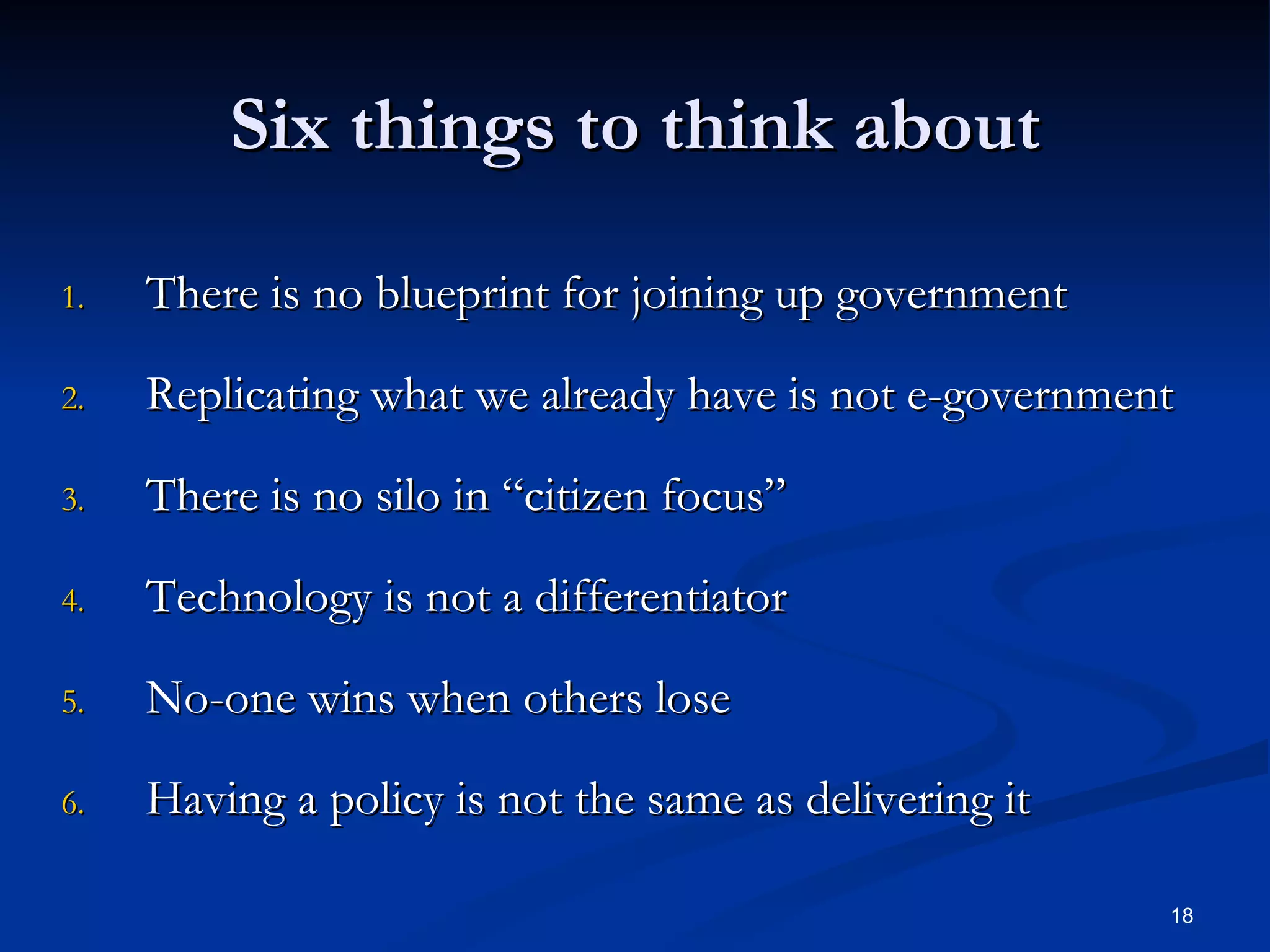
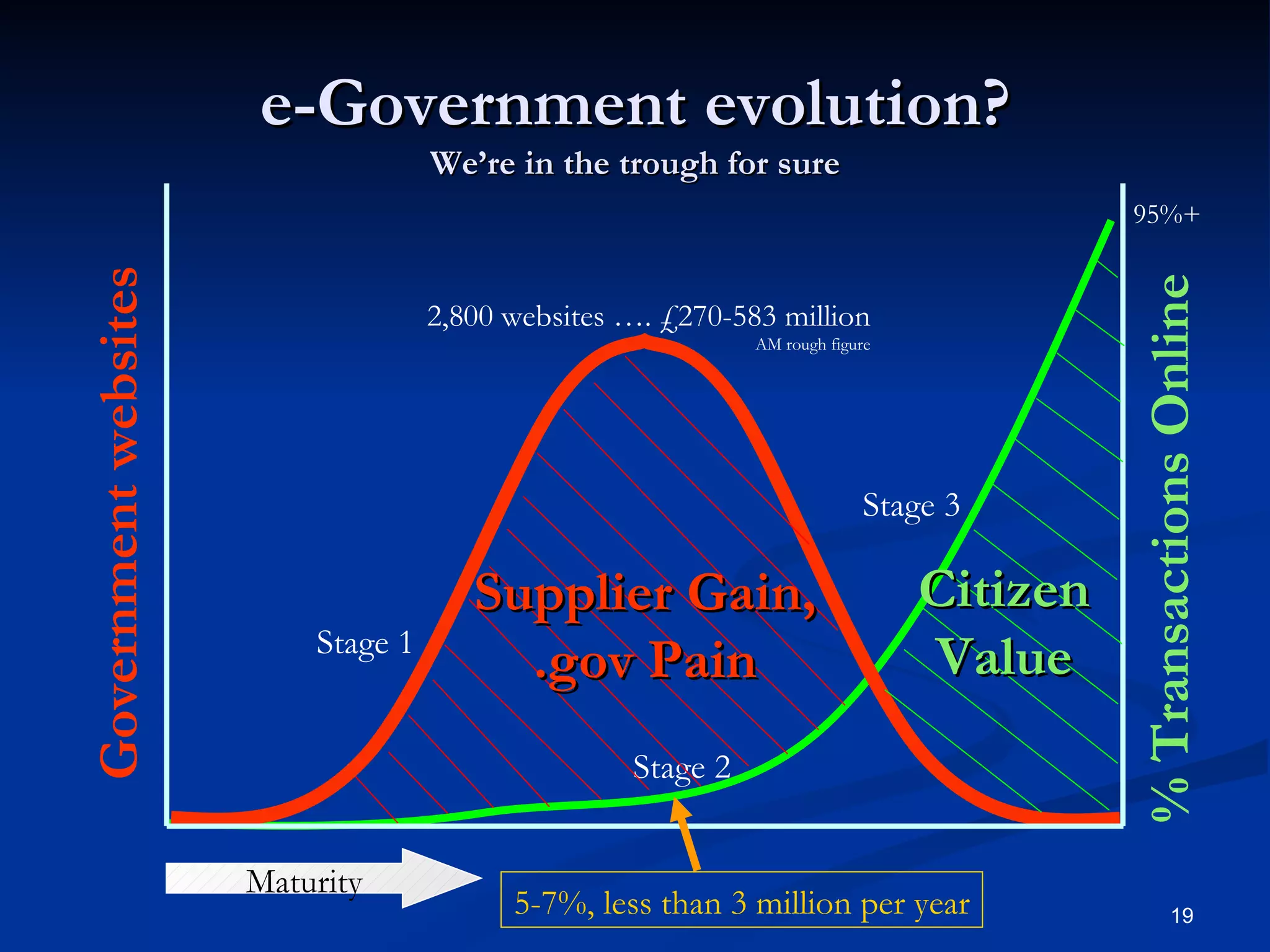
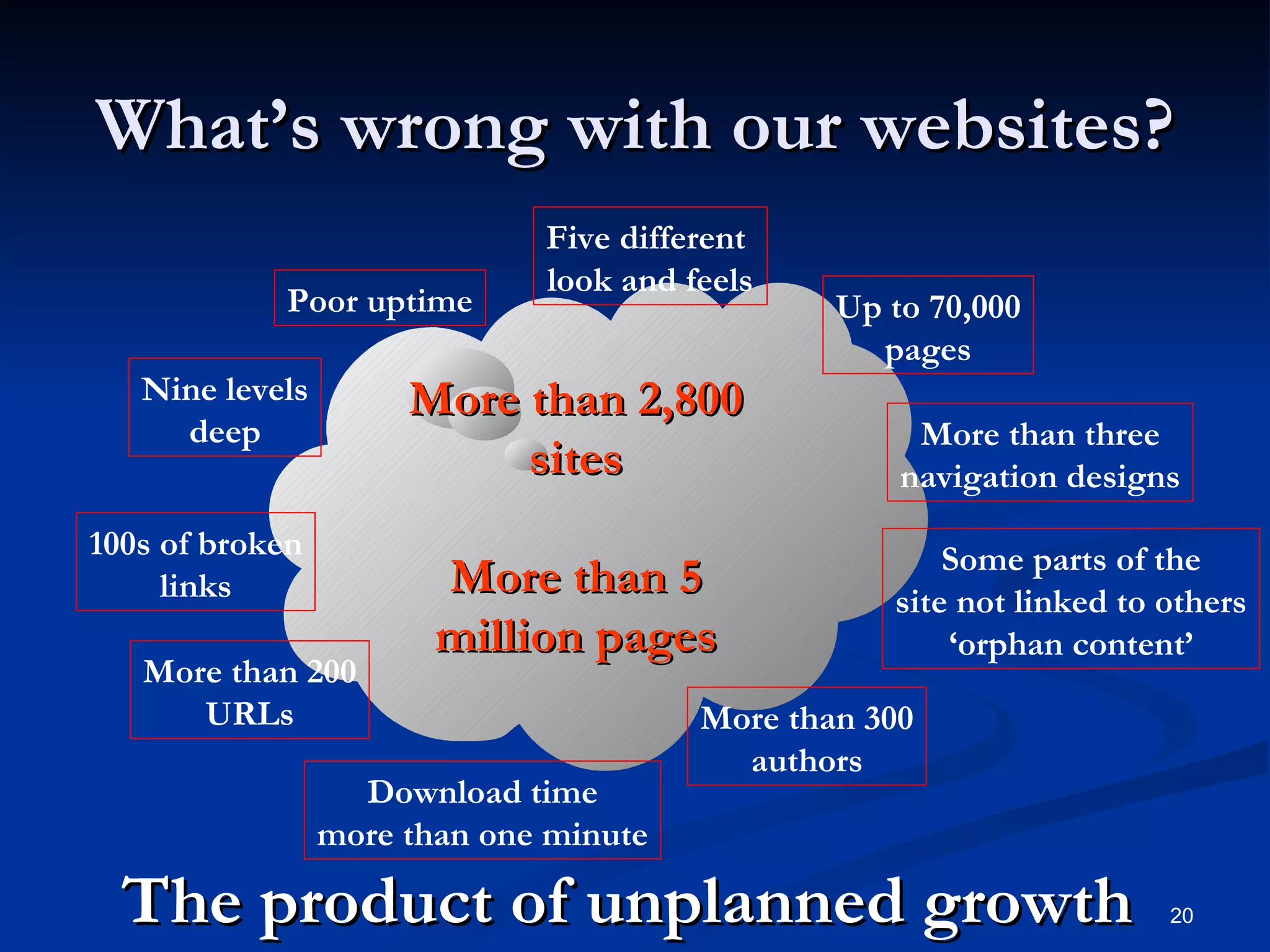
![Usage (or lack of it) Audience penetration (Active reach among total UK Internet users %) Loyalty (Visits per person per month ) = Audience size ( ‘000 unique visitors per month) Commercial Public sector Individual Government sites Source: NNR, UK windowsupdate.microsoft.com 5,378 google.com 6,281 microsoft.com 6,477 bbc.co.uk 4,994 ask.co.uk 3,997 amazon.co.uk 4,281[hidden] loginnet.passport.com 4,972 google.co.uk 4,060 msn.co.uk 3,674 freeserve.com 3,613 dfes.gov.uk 566 0 1 2 3 4 5 6 7 8 9 0 5 10 15 20 25 30 35 All govt. 5,565 Central govt. 4,325 Local govt. 2,427](https://image.slidesharecdn.com/authenticationslides-04-07-2003-100614170201-phpapp01/75/Authentication-slides-04-07-2003-21-2048.jpg)
